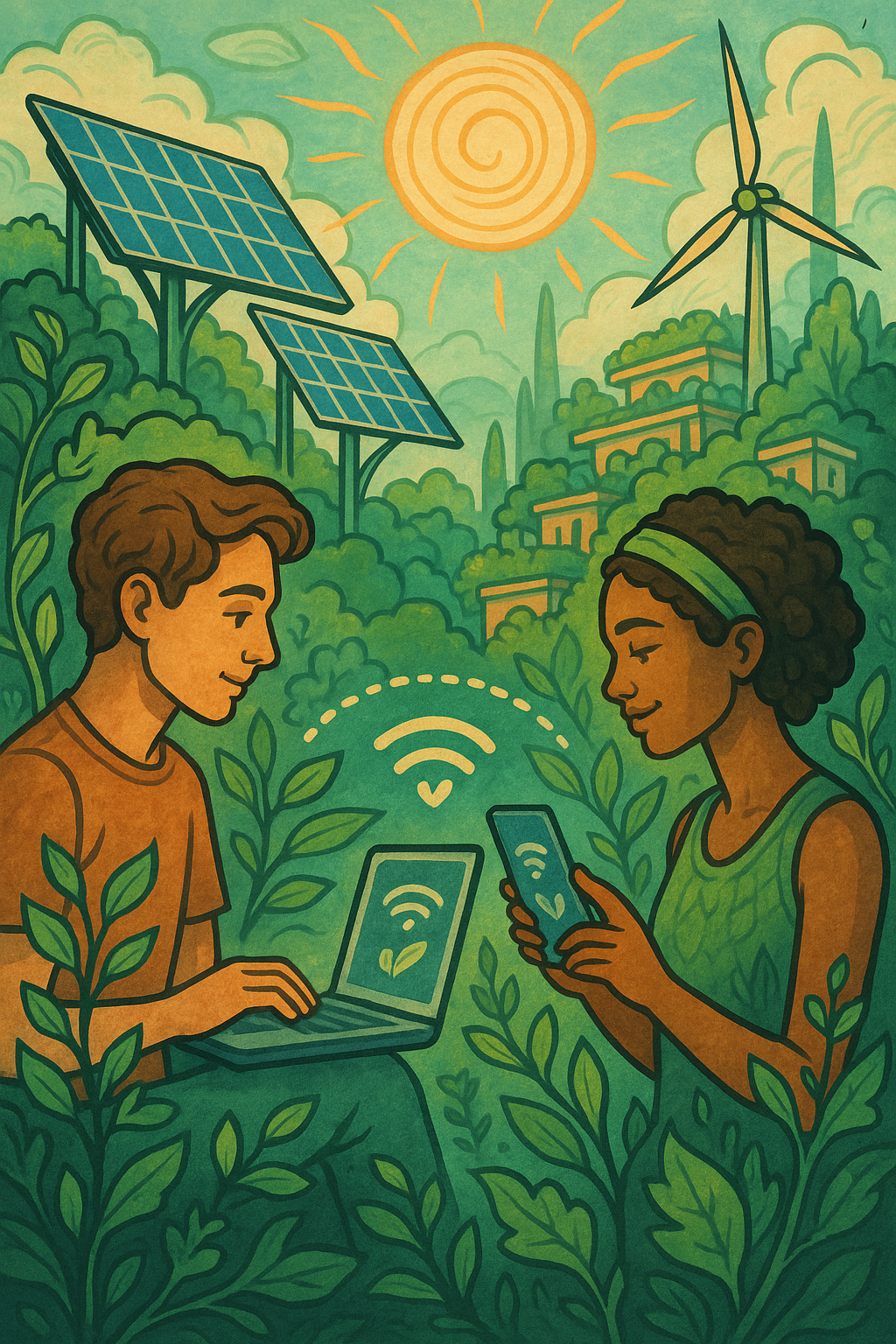
Why Peer-to-Peer Software Is Inherently Solarpunk
Resilience, Community, and Energy-Aware Infrastructure
When people imagine solarpunk futures, they often think of lush green architecture, community gardens, and microgrids powered by the sun. But what about the software that holds these decentralized futures together?
Peer-to-peer (P2P) software—systems that connect users directly without relying on centralized servers—quietly aligns with the core principles of solarpunk: resilience, sustainability, and community empowerment.
1. No Servers, Less Energy
Centralized services rely on massive server farms—energy-intensive infrastructure that needs constant cooling and maintenance. By contrast, P2P networks distribute computation and storage across everyday devices. When you seed a torrent, share a file over IPFS, or chat through a decentralized messenger, you bypass energy-hungry data centers entirely.
This distributed model means that P2P software scales with the people who use it, not with corporate budgets or server racks. In a world where energy use needs to be intentional and efficient, that matters.
2. Built for Resilience
Centralized systems are brittle. A power outage, a policy change, or a server failure can bring down access for millions. P2P systems are more like mycelial networks—redundant, adaptable, and hard to kill. If one node goes offline, others take its place. If a network is split, it can often reconnect itself without a single point of failure.
This resilience isn’t just a technical feature—it’s a political one. In solarpunk futures, communities don’t wait for permission or help from faraway authorities. They adapt and help each other. P2P systems are built with that spirit.
3. Code That Builds Community
Solarpunk is as much about how we live together as how we power our lives. P2P systems foster local and global cooperation. You don’t “use” a peer-to-peer network—you are the network. Every connection is an act of mutual aid. Every node strengthens the whole.
P2P software encourages trust, cooperation, and sovereignty. It lets communities build their own networks, share knowledge, and stay connected—even off-grid. It’s not just infrastructure—it’s culture.
The Solarpunk Stack Isn’t Just Solar Panels
If we want a world that’s sustainable, democratic, and rooted in local empowerment, we need tools that reflect those values. P2P software doesn’t just reduce server costs—it reimagines what digital infrastructure can be.
In the solarpunk future, you might grow your own food, generate your own electricity, and host your own data. P2P is how software grows with the sun.